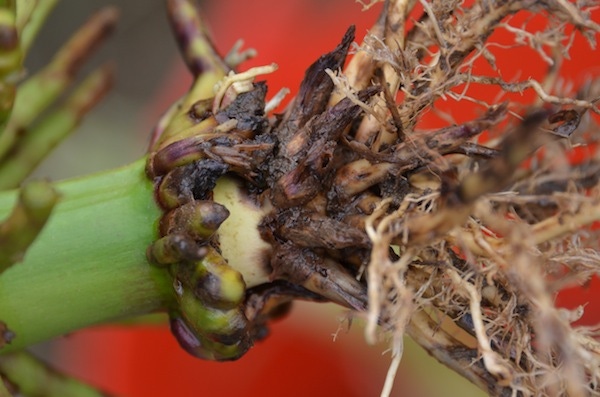September 11, 2013

Each year, the performance of corn rootworm products (Bt hybrids and planting-time soil insecticides) are evaluated in several trials at University of Illinois Education and Research Centers located near DeKalb, Monmouth, Perry and Urbana. The experiments are conducted in plots that were planted to a trap crop (late-planted corn, interplanted with pumpkins) the previous year. A trap crop system is used to help ensure greater levels of rootworm pressure from year to year.
In 2013, the level of root pruning in three of the locations, DeKalb, Monmouth and Perry, was insufficient to adequately evaluate the efficacy of the products. Consequently, only the root ratings for Urbana are available. Later in the year, for those interested, root ratings for all the trials will be published in the on-line onTarget Report.
Want more from CSD? Subscribe to CSD Extra and get the latest news right to your inbox!
Root injury in the untreated checks for the Urbana location ranged from 0.91 (nearly 1 node of roots destroyed) to 1.8 (nearly 2 nodes of roots destroyed). The DeKalb (DKC62-98) check had significantly less root pruning than the other two checks; however, the seed had been treated with a greater rate of an insecticidal seed treatment (Poncho 500). This difference in insecticidal seed treatment rates may have been responsible for these root injury differences among the untreated checks.
In general, the insecticides and Bt hybrids provided high levels of protection against rootworm larval injury in the Urbana study. The application of Aztec 2.1G or Force CS to a Bt hybrid did not significantly improve root protection over that of the soil insecticides alone. Root injury was significantly less when Capture LFR was used in combination with certain Bt hybrids (Agrisure 3122 E-Z Refuge and Genuity SmartStax RIB Complete) as compared with its use as a stand-alone rootworm product.
See the complete trial results at The Bulletin website.
You might also like:
You May Also Like




